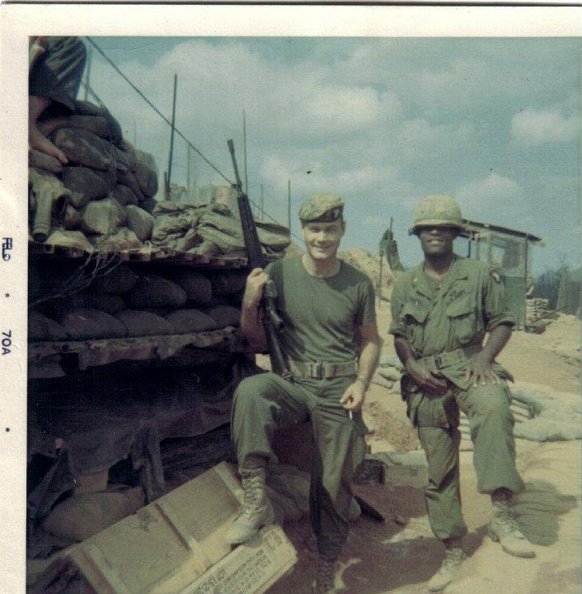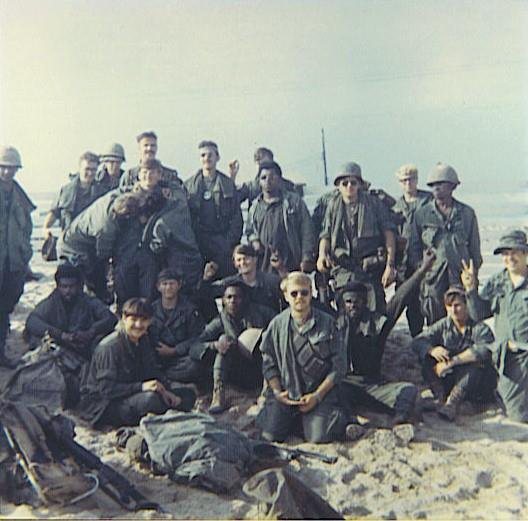VERY RARE! 101st Airborne Division 501st Parachute Infantry Regiment Vietnam War Forward Operating Base Unit Theater Flag






























VERY RARE! 101st Airborne Division 501st Parachute Infantry Regiment Vietnam War Forward Operating Base Unit Theater Flag
Comes with C.O.A.
This extremely rare and museum-grade Vietnam War theater flag is from the 101st Airborne Division, 1st Battalion, 501st Parachute Infantry Regiment.
This unit flag of the infamous 101st Airborne Division (Air Assault) ("Screaming Eagles") is a remarkable and rare piece of Vietnam War history from one of the most famous Divisions of the Vietnam War. This unit flag was flown at the in-theater forward operating base of the 101st Airborne Division, 1st Battalion, 501st Parachute Infantry Regiment.
The 101st deployed to South Vietnam in 1967 included the 1st and 2nd Battalions of the 501st. The division participated in twelve campaigns and was decorated by the Republic of Vietnam on three occasions. The 501st received a Presidential Unit Citation for their actions during the Battle of Hamburger Hill in May 1969; the unit's battle streamer is embroidered Dong Ap Bia Mountain. The 501st also participated in Operation Texas Star, which culminated in the Battle of Fire Support Base Ripcord in July 1970. The entire 101st participated in Operation Dewey Canyon II, in support of the ARVN attack on the Ho Chi Minh Trail in Laos in February–March 1971. In all this unusual and difficult combat, all 501st units performed as bravely as their predecessors had in WWII.
Paratroopers of the 101st Airborne Division, 1st Battalion, 501st Parachute Infantry Regiment fought a gruelling battle against the North Vietnamese for four weeks in 1969 at Tam Ky…
On May 21, 1969, while much of the 101st Airborne Division’s 1st Battalion, 501st Infantry, is engaging the enemy, Lieutenant Ed Sherwood’s Third Platoon, Delta Company, is guarding rucksacks. The company’s first and second platoons have advanced toward a North Vietnamese bunker complex some 100 meters north. Before deploying for their assault, they dropped their heavy rucksacks so they could move more quickly. If the enemy were to capture the rucksacks, which are laden with water, ammunition, and equipment, it would be a great prize for them, and the paratroopers of Third Platoon have been tasked to guard them. Sherwood and his three squads of riflemen can hear the battle a short distance away, but no stray fire comes their way.
The squad closest to the action, led by Sergeant Jim Littleton, believes it can assist in the fight. Without asking Sherwood, Littleton takes a few men and sneaks closer to the fighting. If Littleton had asked, Sherwood would have refused to let him go, so the sergeant follows the age-old credo, “it is better to beg forgiveness than ask permission.” The NCO soon realizes the troops in contact are in a tough spot, so he informs Sherwood of his new position and tells his officer the squad can help in the fight. Sherwood tells him to go ahead.
One of Littleton’s men, Private First Class Rob Sitek, is on point. He sees Specialist Mike Tomaszewski on a rice paddy trying to recover wounded men. Mike has already fired nine magazines through his M-16 and has grabbed more from a wounded buddy. Ironically, the extra ammunition is back in the rucksacks. Mike directs the members of Littleon’s squad along a trail where they might be able to flank the bunkers. They pass a dead enemy soldier, and then see an anguished American who has just lost his two best friends.
Bursts of fire from an RPD machine gun and an AK-47 send them all diving to the ground. A well-concealed bunker is only 20 meters away. As the paratroopers return fire, a nearby M-60 machine gun lets loose on the bunker, quickly suppressing the enemy inside. Private First Class Johnny Pilsner turns to guard the squad’s rear.
101st Airborne Division Attacks:
Under the leadership of General Melvin Zais, commanding general of the 101st Airborne Division, paratroopers engaged a North Vietnamese regiment on the slopes of Ap Bia Mountain on May 10, 1969. Entrenched in well-prepared fighting positions, the North Vietnamese 29th Regiment repulsed the initial American assault, and after suffering a high number of casualties, U.S. forces fell back.
The soldiers of the North Vietnamese 29th Regiment—battle-hardened veterans of the Tet Offensive—beat back another attempt by the 3rd Battalion, 187th Infantry on May 14. An intense battle raged for the next 10 days as the mountain came under heavy air strikes, artillery barrages and 10 infantry assaults, some conducted in heavy tropical rainstorms that reduced visibility to near zero.
Due to the bitter fighting and the high casualty rate, Ap Bia Mountain was dubbed “Hamburger Hill” by journalists covering the Vietnam War. Speaking to a reporter, 19-year-old Sergeant James Spears said, “Have you ever been inside a hamburger machine? We just got cut to pieces by extremely accurate machine gun fire.”
Hamburger Hill Captured:
On May 20, General Zais sent in two additional U.S. airborne battalions (the 1st Battalion, 506th Parachute Infantry Regiment and the 2nd Battalion, 501st Parachute Infantry Regiment), plus a South Vietnamese battalion as reinforcements for his increasingly disgruntled soldiers.
One U.S. soldier—who had fought in nine of the 10 assaults on Hamburger Hill—was quoted as saying, “I’ve lost a lot of buddies up there. Not many guys can take it much longer.”
Finally, in the 11th attack, the North Vietnamese stronghold was captured on May 20, when thousands of U.S. troops and South Vietnamese soldiers fought their way to the summit. In the face of the four-battalion attack, the North Vietnamese retreated to sanctuary areas in Laos.
Hamburger Hill Abandoned:
On June 5—just days after the hard-won victory—Ap Bia Mountain was abandoned by U.S. forces because it had no real strategic value. The North Vietnamese re-occupied Hamburger Hill a month later.
“The only significance of the hill was the fact that your North Vietnamese (were) on it … the hill itself had no tactical significance,” General Zais was quoted as saying.
Reports of casualties vary, but during the 10 days of intense fighting, an estimated 630 North Vietnamese were killed. U.S. casualties were listed as 72 killed and 372 wounded.
Legacy of Hamburger Hill:
The bloody battle over Hamburger Hill and the fleeting victory resulted in a firestorm of criticism from anti-war activists. Outrage over what appeared to be a senseless loss of American lives was exacerbated by photographs published in Life magazine of U.S. soldiers killed during the battle.
On the floor of the U.S. Senate, Edward Kennedy scorned the military tactics of the Nixon administration. Kennedy condemned the battle for Ap Bia Mountain as “senseless and irresponsible.” General Creighton Abrams, commander of U.S. Military Assistance Command Vietnam, was subsequently ordered to avoid such intensive ground battles.
But not all the soldiers and military leaders agreed that Hamburger Hill was a wasted effort. Of the criticisms leveled at U.S. commanders, General Zais said, “Those people are acting like this was a catastrophe for the U.S. troops. This was a tremendous, gallant victory.”